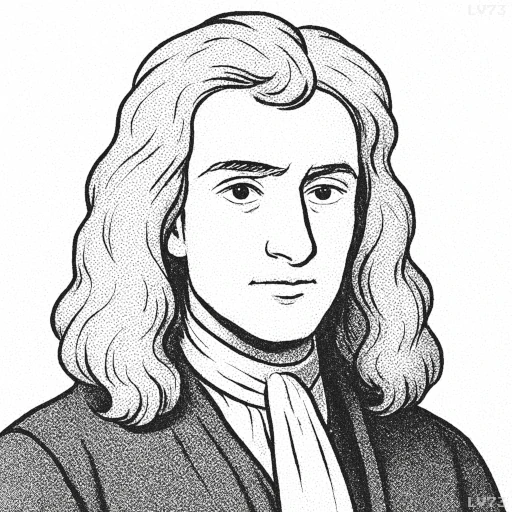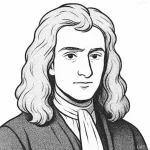“Nothing can be divided into more parts than it can possibly be constituted of. But matter (i.e. finite) cannot be constituted of infinite parts.”

- January 4, 1643 – March 31, 1727
- Born in England (UK)
- Natural philosopher, mathematician, physicist, astronomer, theologian
table of contents
Quote
“Nothing can be divided into more parts than it can possibly be constituted of. But matter (i.e. finite) cannot be constituted of infinite parts.”
Explanation
In this quote, Isaac Newton is addressing the concept of matter and its divisibility. He argues that matter—which is finite—cannot be divided into an infinite number of parts. Newton is acknowledging that while matter can be broken down into smaller components, there is a limit to how much it can be subdivided. This idea reflects his belief in the finiteness of the physical world and the mathematical boundaries that govern natural phenomena. Essentially, Newton is hinting at the idea that there must be a fundamental, smallest unit of matter beyond which division is not possible, an idea that would later be explored in the development of atomic theory.
Newton’s work in the 17th century laid the groundwork for much of modern physics and mathematics, particularly in his exploration of finite and infinite quantities. His thinking was influenced by earlier philosophers like Democritus and Leucippus, who posited the existence of atoms—the smallest indivisible particles of matter. Newton, however, did not yet possess the tools or concepts of quantum mechanics or modern particle physics that would later confirm the existence of atoms and subatomic particles. Yet, his thoughts on the limits of division anticipated future scientific discoveries.
Today, this concept continues to be relevant in modern physics, where we understand that matter is made up of atoms, which are composed of subatomic particles like quarks and electrons. These particles are often described as the “fundamental” building blocks of matter. However, even in contemporary physics, the question remains whether there is a further level of division beyond these particles, a topic explored in the realm of string theory and quantum mechanics. Newton’s early insight that matter cannot be infinitely divided foreshadowed these ongoing investigations into the smallest scales of reality.
Would you like to share your impressions or related stories about this quote in the comments section?
